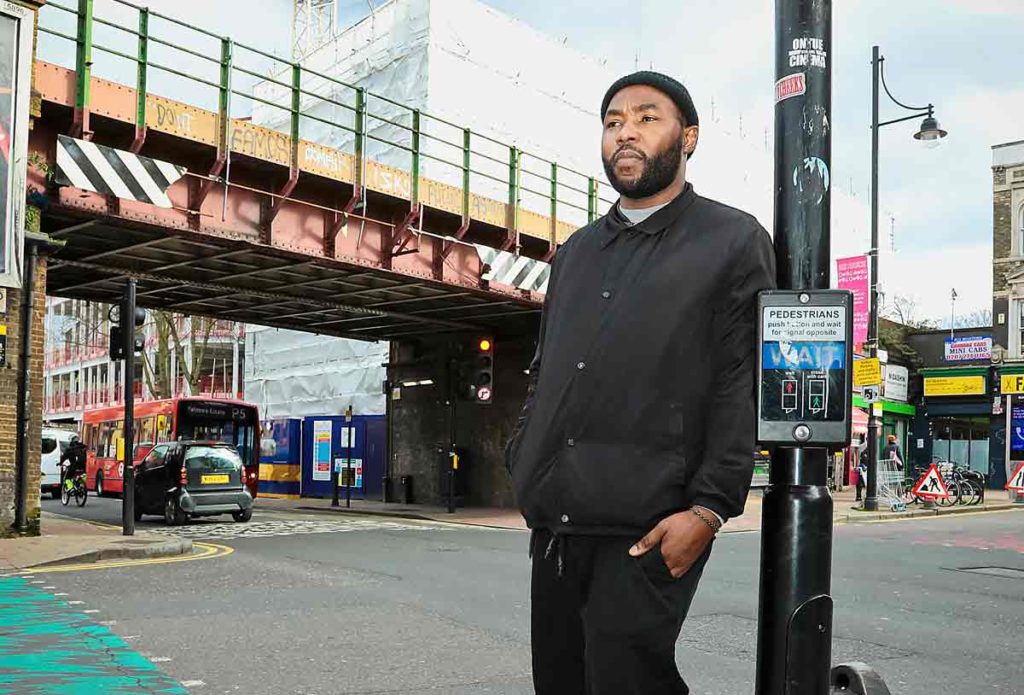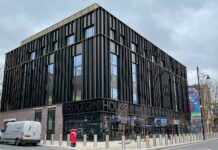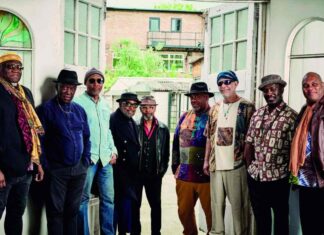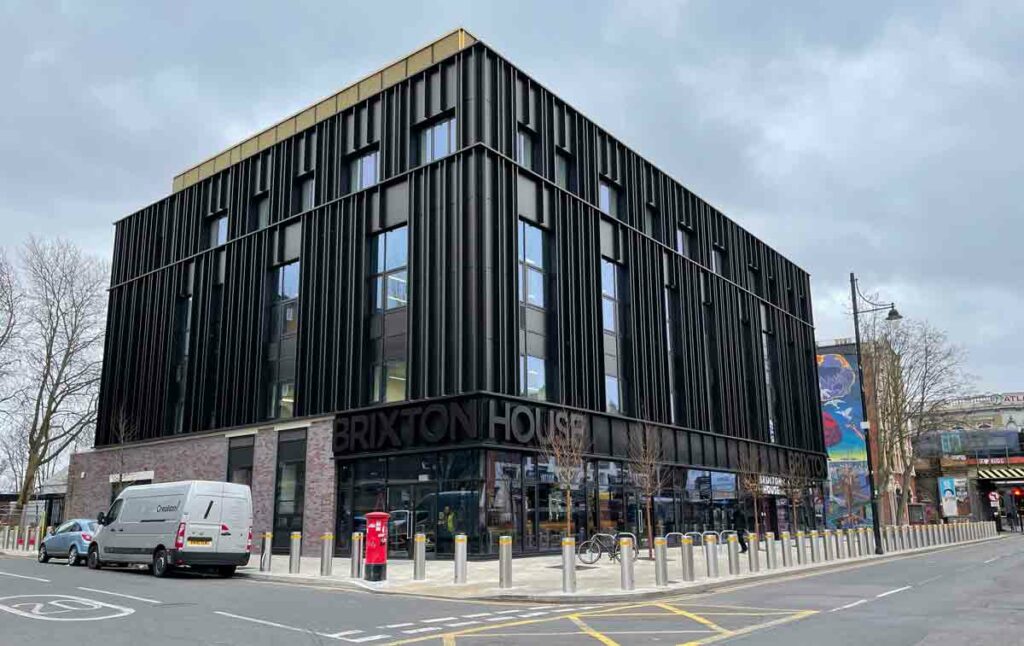
The new Brixton House theatre opened on 24 February with two international shows and a taster programme of activities until 5 March when the venue will open all areas including its café, bar and studios.
Formerly known as Ovalhouse in Kennington, the new centre has been vastly improved and modernised. Making use of the latest technology, it houses two theatres which seat up to 220 people and 120 respectively; several studios, rehearsal and performance spaces; meeting rooms; high-end office accommodation, plus a bar and café open to the public throughout the day and evening. It will also include spaces for the community to use for exhibitions, markets and even parties.

This new arts venue in the heart of Brixton was designed by architects Foster Wilson Size as a multi-dimensional creative hub – “a place for artists and audiences to connect, create and enjoy in their new South London home.” Some eight years in the making, this project was funded from the proceeds of the sale of Ovalhouse, and grants from the London Borough of Lambeth and the Arts Council.
The site was a car park and the new building has been designed to make better use of this space and to harmonise with its immediate Brixton environment. Given the fairly haphazard surroundings, this was something of a challenge.
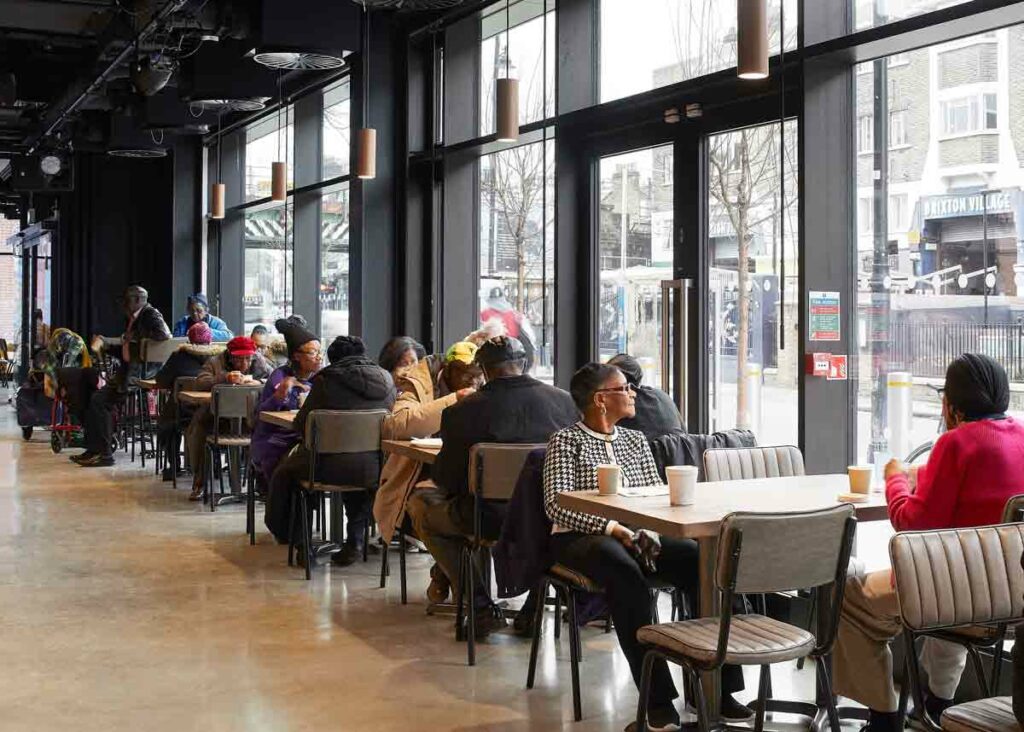
The exterior design echoes the industrial architecture of the market and the proximity of the railway. On upper levels, black anodised fins give depth and modulation to the facade and provide a constantly changing appearance when moving around the building; a pattern that also references the vertical folds of the theatre.
It incorporates coloured LED lighting which will change from day to night and links the building to nearby Electric Avenue – the site of some of the very first electric street lighting.
From the rear, the building references in a much softer way, the fairly brutal lines of the Barrier Block. It has also incorporated but restored the adjacent Carlton Mansions which includes restoring the Nuclear Dawn mural created by Brian Barnes in 1981.
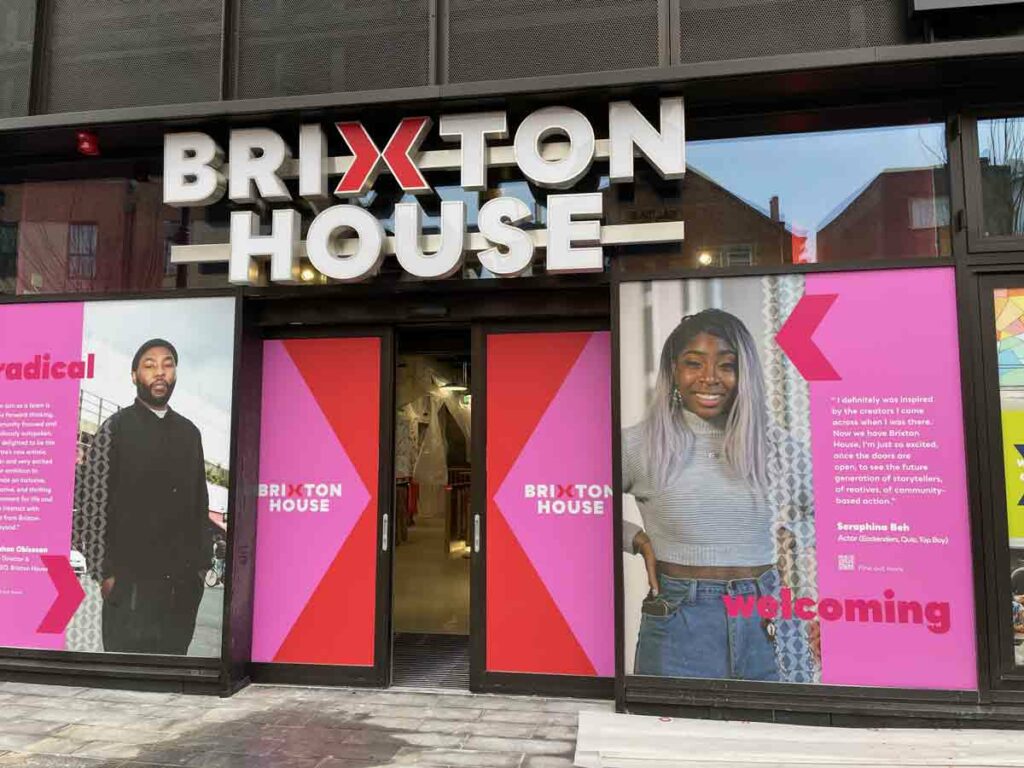
Its purpose as an accessible and welcoming community space is reflected in the glass frontage onto Coldharbour Lane and Somerleyton Road which is intended to attract the local community to sample what is on offer.
It’s a cool, stylish interior – lots of blonde wood and copper – with some bold design and colour statements. Most notably, the bright pink central staircase will I suspect be loved and hated in equal measure. But it will certainly be noticed.
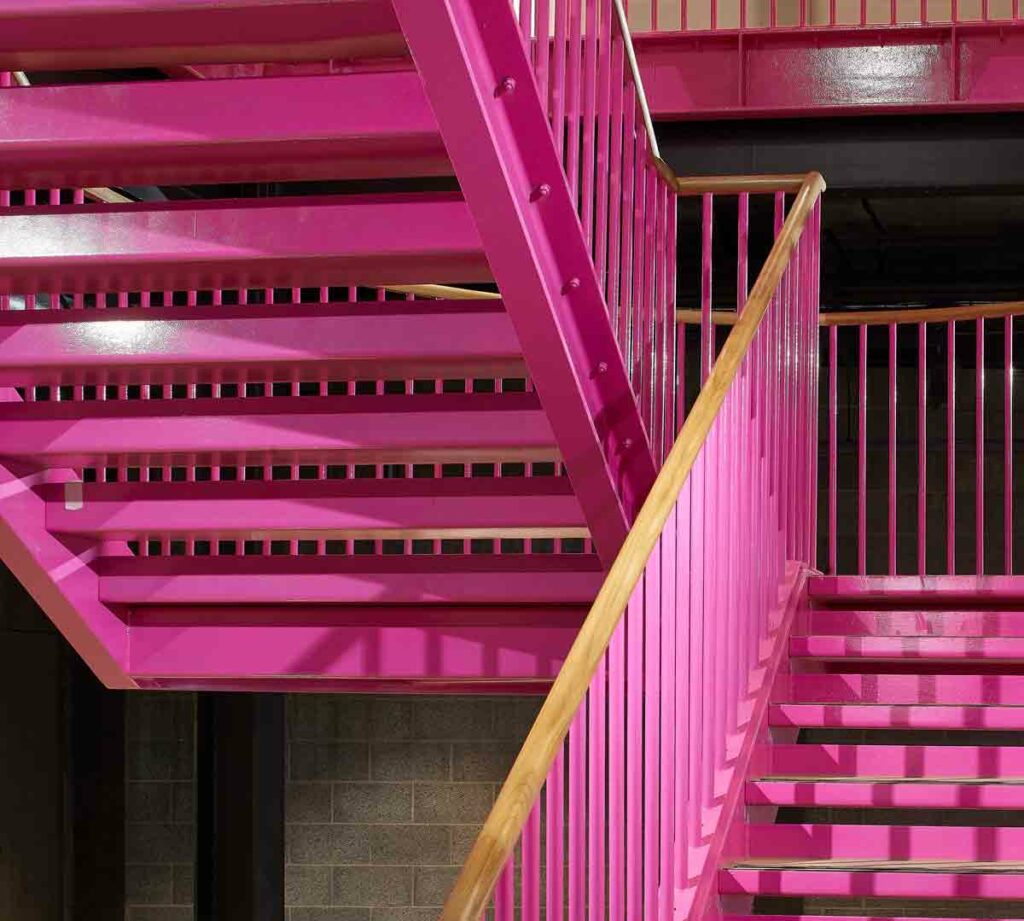
The Brixton House team are anxious that the venue should not be seen as part of a gentrification process which displaces and excludes local people.
Although the business model depends upon attracting theatre companies, audiences and commercial organisations from across London, artistic director and joint CEO, Gbolahan Obisesan, is very clear that Brixton House must be a community resource – as much for the residents of the nearby Moorlands Estate as London’s wider community.
Of course, this will ultimately depend upon the facilities, the pricing and the programming. But the new venue is being launched with the best of intentions.
For the moment, it’s right to celebrate this new addition to Brixton. In the words of Gbolahan Obisesan: “The journey to raise and realise Brixton House has been a long collaborative effort that cannot overlook the needs of the community. It is exciting to now be at a stage to celebrate this cultural hub and theatre, cementing it as a Brixton landmark. A welcoming space for the culturally diverse, international communities of Lambeth to create, enjoy, and be inspired.”
